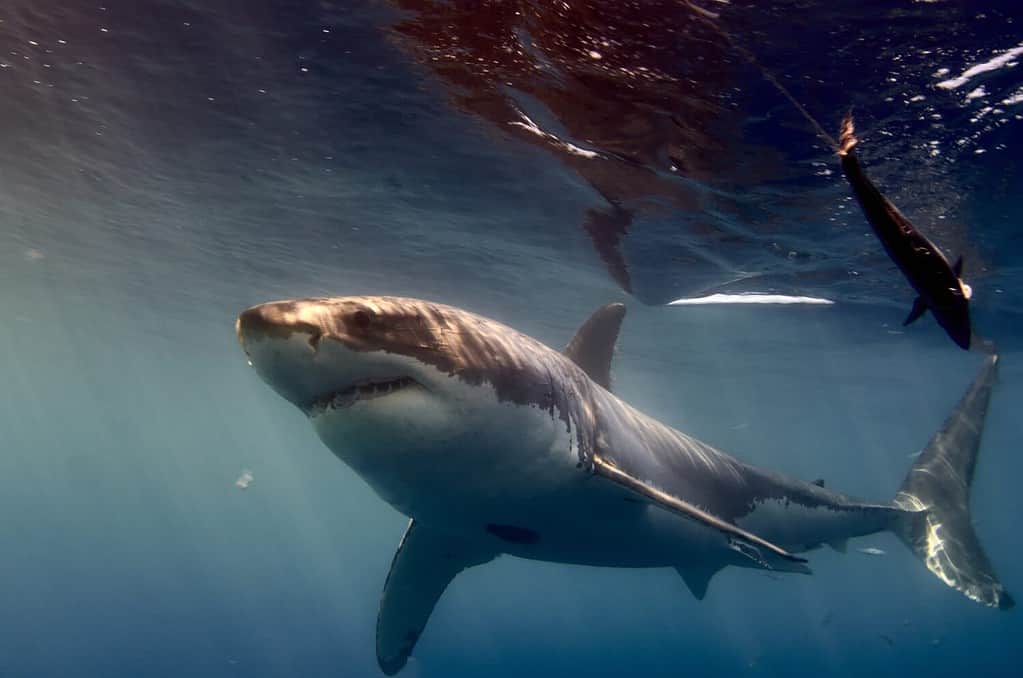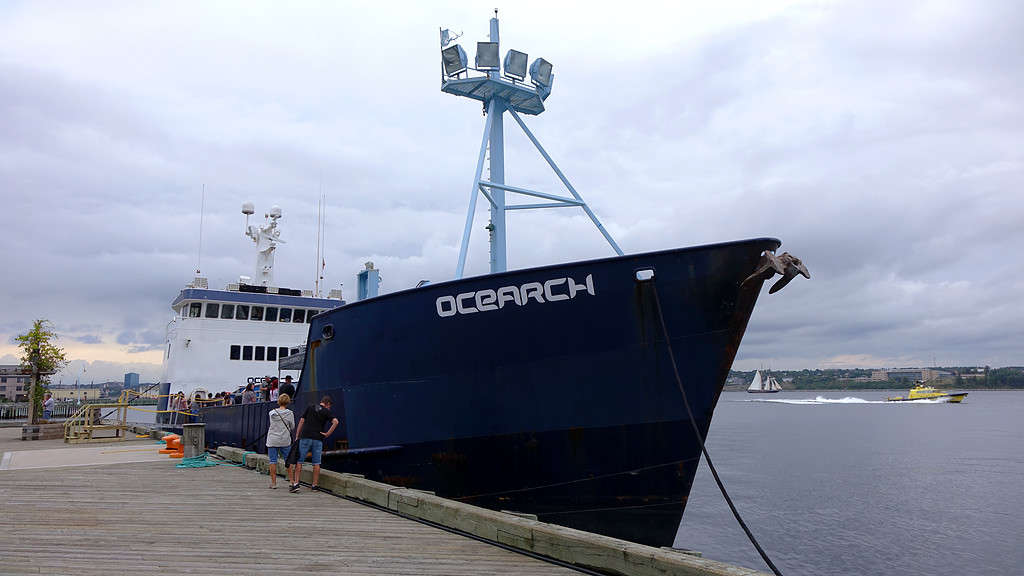Listed as a vulnerable species by the International Union for Conservation of Nature’s Red List, great white sharks are at risk of extinction due to decades of fear-mongering, trophy hunting, commercial fishing, and bycatch. Research and widespread education on these magnificent animals are crucial to helping their populations recover around the world. On the East Coast of the U.S., white shark populations have been slowly increasing due to intensive conservation efforts. In recent years, researchers confirmed the existence of a great white nursery off the coast of Long Island, New York.
In this guide, we’ll delve into this confirmed nursery, the impact of this research, and the ecological significance of protecting great white sharks and their habitats.
An Introduction to Great White Sharks
For decades, especially in Western countries, great white sharks have suffered from mischaracterizations that have framed these amazing animals as mindless killers. However, in recent years, the tides have been turning to reflect a growing interest among the general public in non-sensationalist wildlife education and an ecological-oriented understanding of the animals we share our planet with. By better understanding great white sharks, generally referred to as white sharks (Carcharodon carcharias) in the scientific community, we can better protect and advocate for this incredible species.
These amazing animals inhabit cool, temperate, and tropical waters around the world. Although they are pelagic (ocean-going) animals capable of diving to over 4,000 feet, they primarily live in the upper part of the water column in temperate coastal habitats. Great whites can live possibly over 70 years, grow up to about 20 feet long, and weigh over 4,000 pounds. At birth, white sharks typically measure about 4 feet long and the average litter is between two and ten pups. They grow slowly, with males reaching full maturity at 26 years of age and females at 33 years old.

A vulnerable species, white shark populations benefit from increased understanding and protection.
©Wirestock Creators/Shutterstock.com
Research on Great White Nursery Sites
An evasive shark capable of journeying over 2,500 miles per year, great whites have historically largely eluded researchers’ attempts to identify critical breeding, birthing, and nursery sites around the globe. However, in the past decade, scientists equipped with increasingly more accurate and durable GPS trackers have been able to identify some of these crucial white shark habitats. By looking at the big-picture data of where individual white sharks are traveling throughout their lives, research organizations can begin piecing together where critical habitat is, how it’s being used by white sharks, and when.
One such research organization dedicated to understanding the lives of white sharks is OCEARCH, a data-oriented research organization committed to providing open-source scientific information and tracking data on keystone marine species. This information can help in strengthening the protection of habitats that white sharks use for reproduction, which not only better protects white sharks but the ocean’s ecosystem as a whole.

Research organizations such as OCEARCH are working to identify white shark birthing and nursery grounds.
©Coastal Elite from Halifax, Canada / CC BY-SA 2.0 – Original / License
Confirmation of A Great White Shark Nursery Off Long Island, New York
Through their tracking work, in 2016, researchers with OCEARCH were able to confirm the existence of a white shark nursery off the coast of Montauk, Long Island. Over two weeks in the area, the research team found and tagged nine great white pups. This confirmation of a white shark nursery is the first of such in the North Atlantic Ocean.
The ideal great white nursery is a shallow, coastal environment where the young white sharks can hone hunting skills on easy-to-capture prey such as fish, squid, and stingrays while also enjoying a greater degree of protection from potential predators like larger sharks. The Napeague, Tobaccolot, and Fort Pond Bays off Montauk provide this nursery environment where some white sharks may spend the first few years of their lives. In the larger region, scientists believe some of these pups may spend their first 20 years. Adult sharks don’t actively raise their young, but by giving birth in or near these ideal nursery sites, they give their babies a much greater chance of survival.
Currently, researchers have not confirmed whether this nursery site is also the birthing grounds, although scientists believe it is likely in the immediate vicinity. To date, no researcher has recorded a great white giving birth, although by tracking the travels of pregnant great whites and documenting nurseries, organizations like OCEARCH are able to narrow down the potential birthing sites. In addition to the Long Island white shark nursery, researchers have also recently identified great white nurseries in Bahia Sebastian Vizcaino, a warm lagoon along the coast of Baja California, and a broad nursery area between San Clemente, California and Santa Barbara, California.
The photo featured at the top of this post is © Sergey Uryadnikov/Shutterstock.com
Thank you for reading! Have some feedback for us? Contact the AZ Animals editorial team.







